I am always looking for effective, fun, easy ways to teach te reo Māori. The best te reo games and activities are both fun and educational. It’s good to have a variety and ways of extending your kōrero to make simple sentences in te reo.
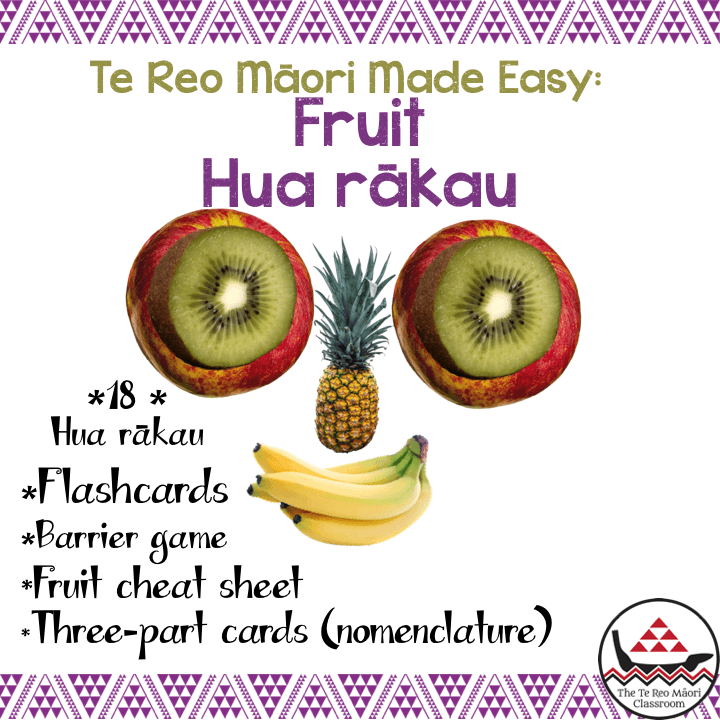
Three-part cards or nomenclature cards, are a teaching method used in Montessori schools and centres. These are simple and easy for learners to manipulate. I particularly like the process they take the learner through which seems so simple but in the heads of our little learners the brain is being challenged. They are used as a second language tool by many language teachers. The “Three-part” refers to the “Control card” which has the picture and name. The other two cards are the picture and name cut separately.

For any language learning the words to learn first are nouns. Learning useful everyday nouns are the best to start with. Obviously they can be repeated, re-used and extended on to make part of a sentence. This is why kai is so good.
The examples I will use are hua rākau or fruit.
Before we talk about these nomenclature cards let’s go through the sequence of learning new kupu.
Flash cards to learn te reo Māori
Firstly we need to identify in English the names of what we are learning. This may seem obvious but your learner may think the mandarin is the orange or the strawberry is the raspberry. I like to use flash cards for this exercise. You can introduce a few at a time or all of them depending on your learners. These ones have both the English and te reo on them. This avoids confusion. In a classroom these can be part of a word wall. They can also be kept together with a metal ring and as a result used a handy reference for writing.

These flash cards can also be hung together as a reference.
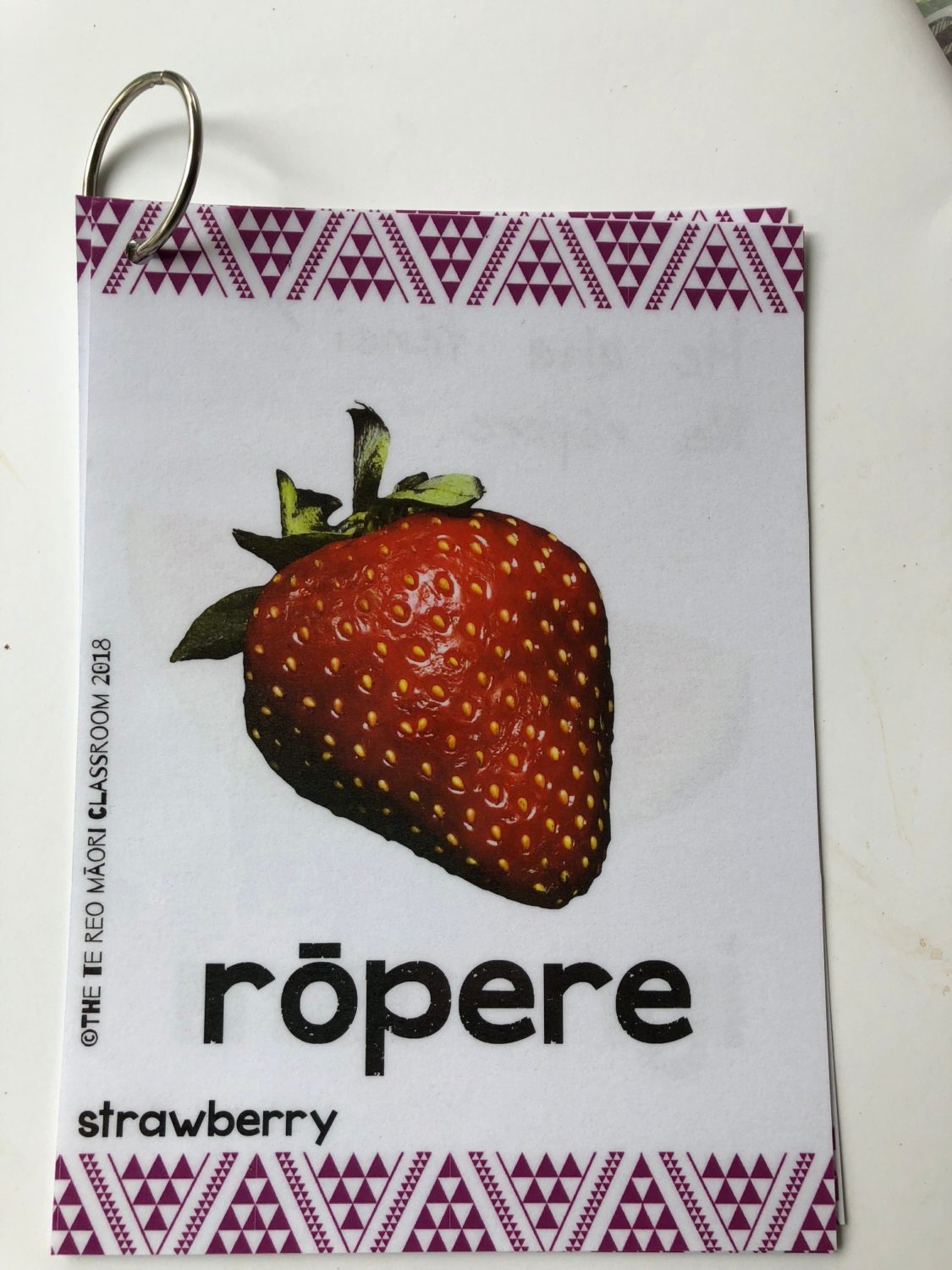
Three-part cards to learn te reo Māori
Learners can have a selection of these cards at first, or all of them. Montessori practice is to lay the “control cards” out. Take the pictures and match them to the correct control card. Next, the names can be matched to the picture and the control cards. If learners can identify the picture it doesn’t matter if they can’t read the word. they can look at shapes of the word.
Here are some ways to use the cards:
- Print and cut out the control card – (the one with the picture and name). Lay down one card at a time and say in a clear voice what it is called. You can say it in both English and te reo, or just te reo.
- Picture Matching – Print a second copy and cut out the picture and labels. Lay down the control cards and have your learner match the picture cards to the control cards.
- Sight Word Matching – Cut out the label cards and have the child match the labels to the control cards by sight.
- Object Matching – If you have plastic fruit to match the pictures, let the tamaiti match the objects to the pictures.
- Memory Game – Print 2 copies of each picture, lay them face down and play a classic memory game (or maybe match picture with label?)
“For pre readers and early readers, they may compile the cards without reading the labels at all, matching the shapes they see on the control card to the shapes they see on the labels. This is a fairly straight-forward task for the very young child, who has a natural ability to notice small differences. For early writers, though, the nomenclature cards offer practice forming letters and meaningful application for that practice.”
Here is a short lesson on frogs (English) which explains the benefits of three part cards.
Here are some other examples of nomenclature cards.
Imagine the number of words you could teach/learn this way. In a classroom I would then have these in a reading tumble or as a reading activity. It is important that as part of ongoing learning or maintenance that these words be repeated or used as part of “normal” conversation. Lunch time would be a perfect time to recall all the names of the hua rākau your tamariki are eating. (You could make a graph for maths).
The next stage is to have a question to ask. We are learning the names for some fruit so to turn this in to a conversation we need ask a question.
If you are identifying the fruit the obvious question would be”He aha tēnei?” “What’s this?”
The reply would begin with “He..” meaning a or some.

For this example “He aha tēnei?”
“He kokonati”
I like to have a lunchbox where all these cards are stored. Written on it is “He aha kei roto i te pouaka kai?” What’s in the lunchbox.
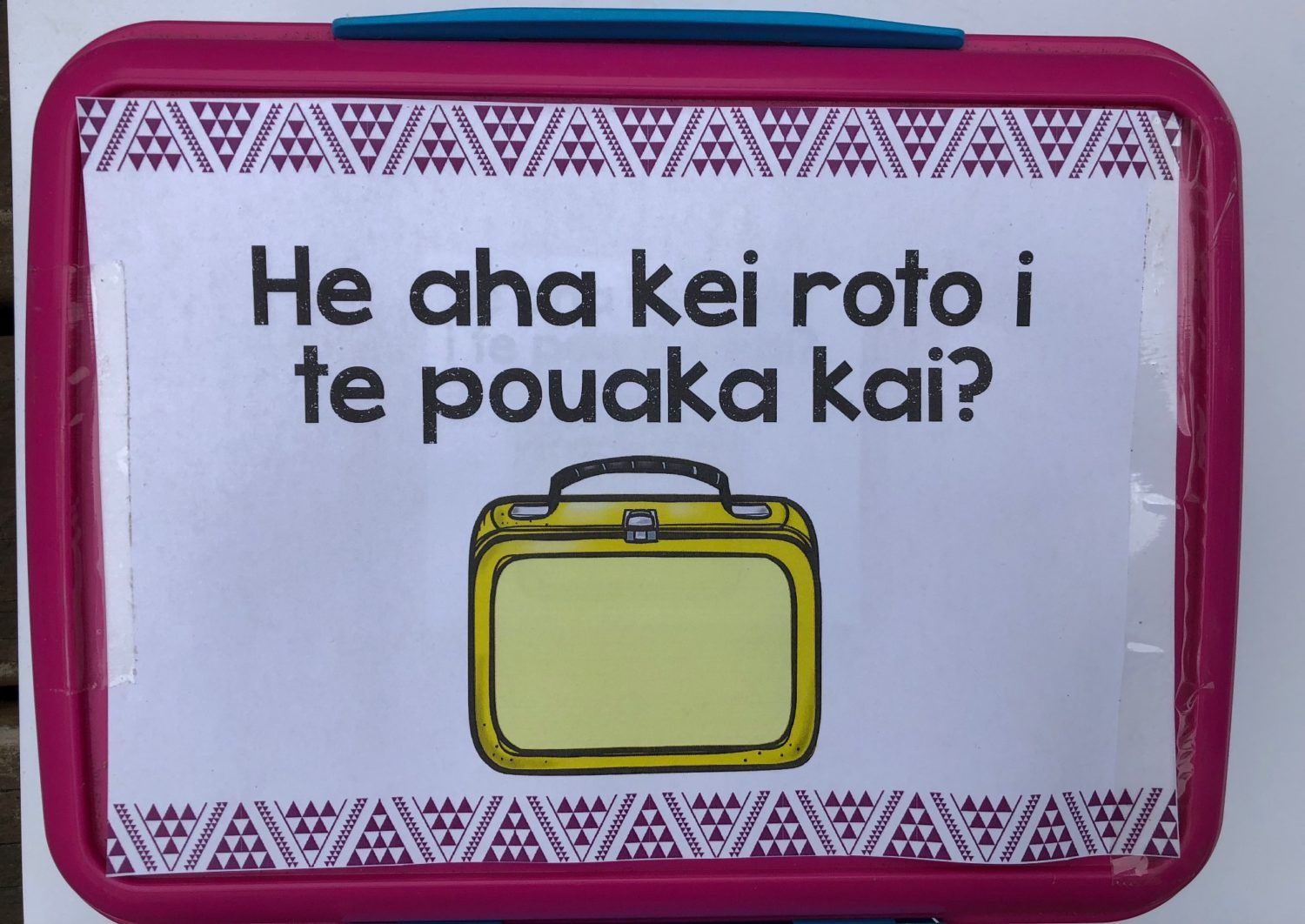
Tamariki can sit in a circle and pass the pouaka kai around, pull out a piece of kai and tell us what it is.

Having real examples of the words and pictures is a good idea. Also some named and some un-named is good, especially for those learners who have remembered the correct name.
Barrier games to learn te reo Māori
As an extension I have added a barrier game activity to the resource so that you can extend the language to a bit of kōrero.
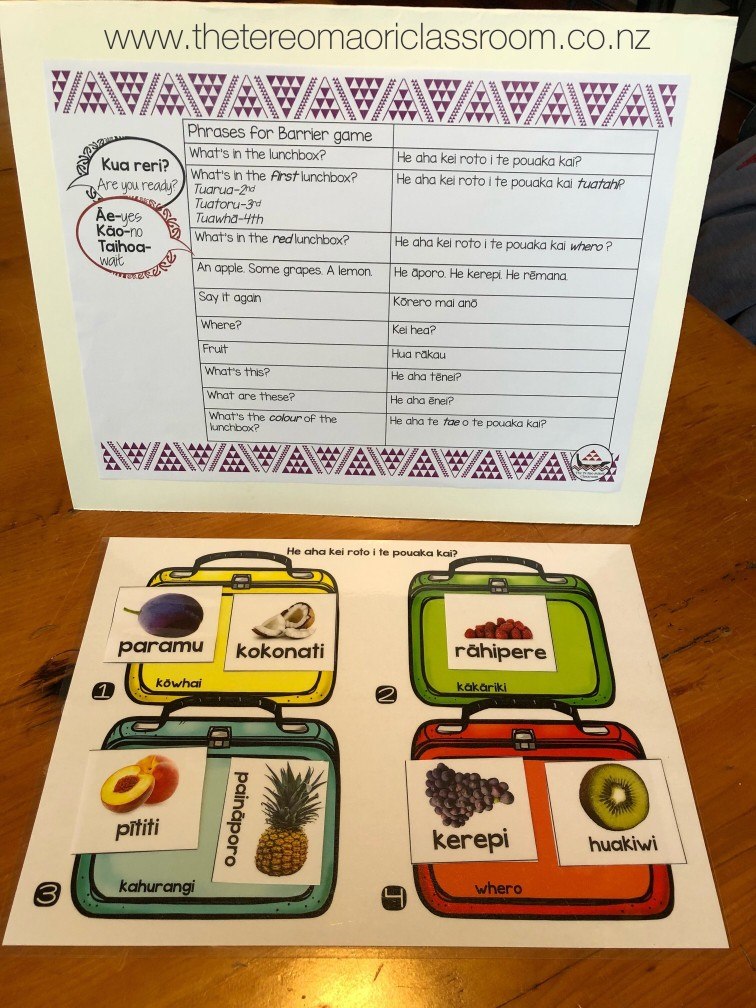

You can ask your partner “Kei hea te manarini?” Where’s the mandarin?
Or “He aha kei roto i te pouaka kai kākāriki?” What’s in the green lunchbox? Your partner then tells you “He kokonati”. A coconut. You then place the kokonati in the pouaka kai kākāriki. Barrier games are a simple way of extending your reo. You can start by just using some te reo-
http:/https://youtu.be/vYYMqlIYEh4
“What’s in the green pouaka kai?” Then extend the sequence when you”re ready 🙂
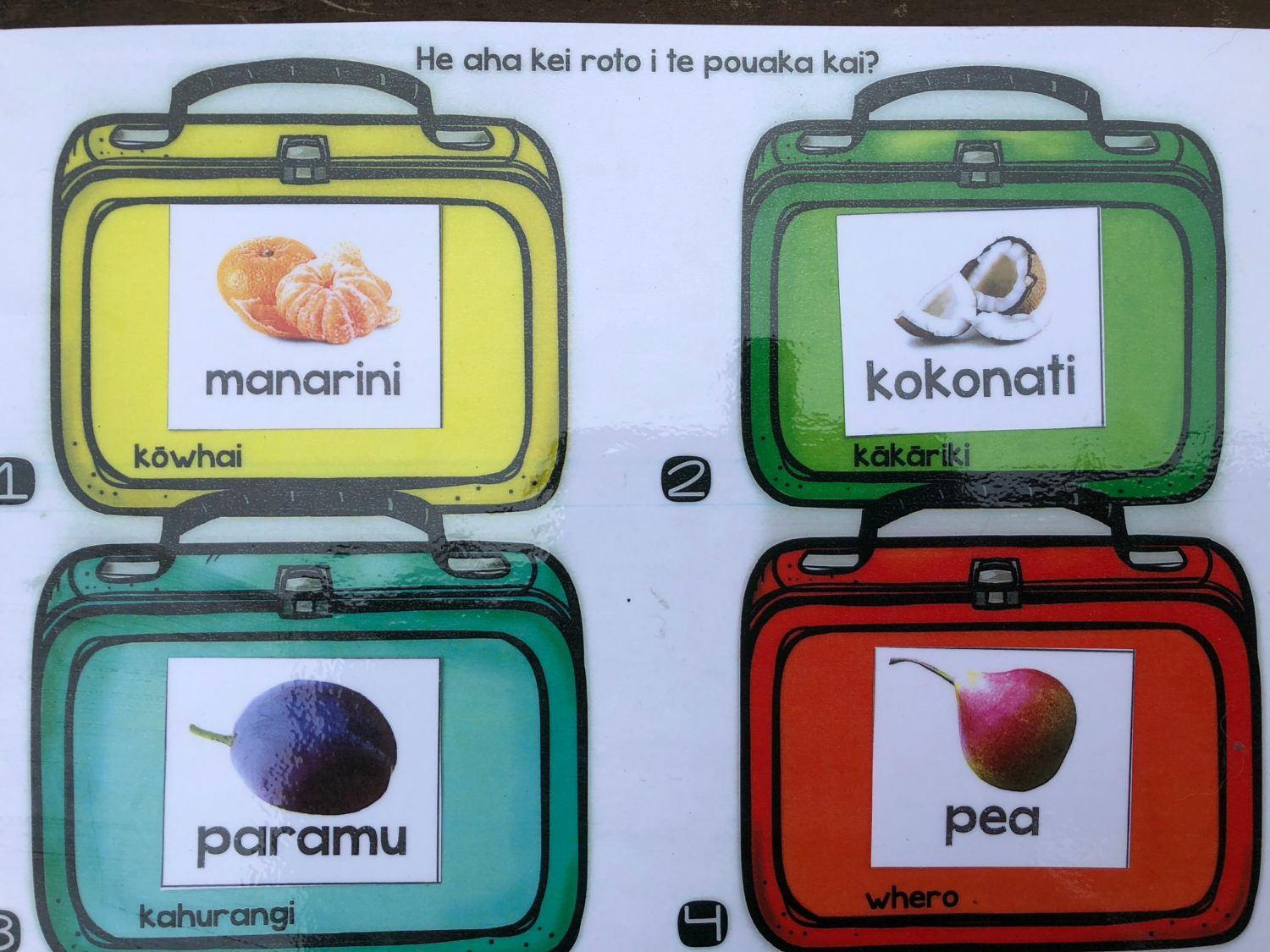
Pronunciation of te reo Māori
As there are often more than one word for some fruit I have used the Māori Dictionary for reference. The reason for this is that there are sound bites. This means you can hear the correct pronunciation to get you on the right track. Kokonati.
At the next stage we have small pictures of the kai which are un-named. You and your learners can work towards being able to name all of these by memory. This size makes it easy to place several in the barrier game lunchboxes.

This new resource is now being made as part of a series Te Reo Māori Made Easy resources for the classroom and for home.
Here is this rauemi Te Reo Made Easy-Fruit Hua rākau if you would like tp purchase it for your home, work or classroom.
Check out the Native Bird Barrier Game Freebie.

